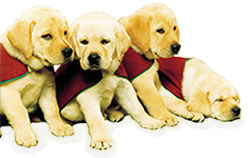Home
About us
News
Services
Guide Dogs
Vision Loss Resources
Discovery Centre
Conferences & Courses
Shop
Support Us
Contact Us
Guide Dogs
Puppy Selection
Training
Puppy Raising
Big Test
Perfect Match
Dog Care
Handling
Guide Dog History
CARING, TRAINING AND HANDLING FOR A GUIDE DOG
Guide dogs are an instantly recognizable symbol associated with blindness and often grab much of the attention when people think about blindness. In this section we look at how important a role guide dogs play in assisting the vision impaired person.
Puppy Selection
 The process of training a Guide Dog begins very early when puppies are around 8 weeks old. The first part of their journey begins in the home of volunteer puppy raising families where they spend the next 12 months of their lives growing up and learning some of the basics about living with people. You can find out more about puppy raising and puppy raising families by visiting the Association for the Blind of Western Australia’s website.
The process of training a Guide Dog begins very early when puppies are around 8 weeks old. The first part of their journey begins in the home of volunteer puppy raising families where they spend the next 12 months of their lives growing up and learning some of the basics about living with people. You can find out more about puppy raising and puppy raising families by visiting the Association for the Blind of Western Australia’s website.
When the puppies are just about ready to go to “puppy raising families” trainers take a visit to the breeder to select the best puppies for training.
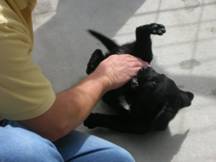 This puppy is selected; here the trainer is playing with the pup who happily roles on his back to play, displaying both submission and trust, essential qualities for a trainee guide dog.
This puppy is selected; here the trainer is playing with the pup who happily roles on his back to play, displaying both submission and trust, essential qualities for a trainee guide dog.
When the puppies are around 12 months old they are tested for their suitability for further training. See if you could select a puppy for training; try the “Trainer Test” by clicking on “Eye Con” 1.
Training
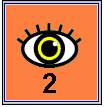 Not all vision impaired people need or want a guide dog, however, for those that do the dogs give their owners both independence and companionship. In Western Australia between 6 and 10 dogs are trained each year. You may have thought that more dogs might be trained than this each year but the process is time consuming and expensive, two factors that limit the number of dogs that can be trained at a time.
Not all vision impaired people need or want a guide dog, however, for those that do the dogs give their owners both independence and companionship. In Western Australia between 6 and 10 dogs are trained each year. You may have thought that more dogs might be trained than this each year but the process is time consuming and expensive, two factors that limit the number of dogs that can be trained at a time.
Some of the year’s trainees will go to new owners and others will replace dogs being retired as working dogs. Not all the dogs that are trained will graduate as guide dogs from the training school either, which further limits the number “successfully” trained in any one class.
Training guide dogs takes a considerable amount of patience and is carried out in stages. The first of these stages occurs while the dogs are just puppies.
Puppy Raising
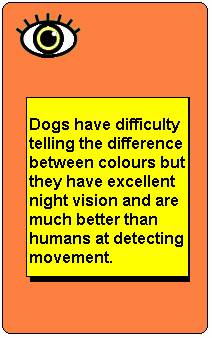 Each puppy is placed with people (often families with children) chosen for their ability to care for the puppy. Known as "puppy raisers" these families teach the
Each puppy is placed with people (often families with children) chosen for their ability to care for the puppy. Known as "puppy raisers" these families teach the  puppy basic skills such as house training, sitting on command and walking correctly on a leash.
puppy basic skills such as house training, sitting on command and walking correctly on a leash.
Socialisation is one of the most important parts of training given to the puppy by its puppy raisers. This involves taking it to shopping centres, railway stations, city centres and a range of other places it is likely to encounter during its training and subsequent work as a guide dog.
Big Test!
When the puppy is about 12 months old, it is assessed for its suitability for training as a guide dog. During a two week period, it is assessed for its reactions toe545 other dogs, cats, trains, buses and other situations it is likely to encounter as a working guide dog. Dogs that are unsuitable may be trained as companion dogs for people who have a disability. For the successful dogs, a rigorous and intensive five month training program commences.
A Perfect Match
When people who are vision impaired apply to have a guide dog, they undergo a program to assess their suitability. Usually, guide dogs are only given to adults who can care for the dog and give them plenty of work and exercise. A guide dog instructor then works with the guide dog and its new owner for about four weeks.
Now you know something about the process of puppy raising see if you can complete the “missing word puzzle” by clicking on “Eye Con” 2
Dog Care
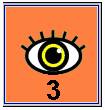
Guide dogs are working dogs and while part of their relationship with a vision impaired person is one of friendship their “job” is to lead a vision impaired person safely about his or her environment.
Like all animals who share a working relationship with man their needs and care become the responsibility of their owner. While we like to stress that the Guide Dog is “not” a pet it has the same kinds of needs as any pet dog.
Click on “Eye Con” 3 and complete the puzzle. You can use the drawing tools to circle the hidden words
Handling
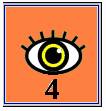 When you meet a person who owns a guide dog you should
When you meet a person who owns a guide dog you should
remember the dog is not a pet and needs to be handled correctly so as not to distract the Dog from the important task of guiding its owner.
Click on “Eye Con” 4 and visit the Association’s website and read the section on the Dos and Don’ts of handling and responding to a guide dog.
Which of these instructions would you find most difficult to follow? I don’t think you would be alone.
Guide Dog History
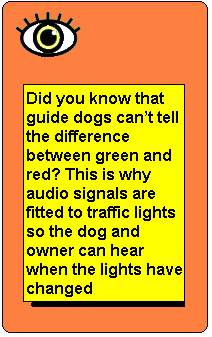
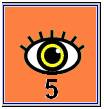 Dogs were first used to guide vision impaired people in 1819 when Herr Johann Whilhelm Klein founded an institute for the blind in Vienna. His ideas were later put into practice in 1916, when Dr Gerhard Stalling established a school to train dogs to assist German soldiers who had been blinded in the First World War. By the late 1920's a school had been established in the U.S.A. and by 1931, in Italy and England.
Dogs were first used to guide vision impaired people in 1819 when Herr Johann Whilhelm Klein founded an institute for the blind in Vienna. His ideas were later put into practice in 1916, when Dr Gerhard Stalling established a school to train dogs to assist German soldiers who had been blinded in the First World War. By the late 1920's a school had been established in the U.S.A. and by 1931, in Italy and England.
GUIDE DOGS IN WESTERN AUSTRALIA
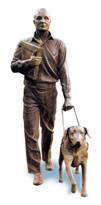
Believe it or not, even though guide dogs had been used in other parts of the world since 1819, it was not until 1952 that a centre for training Guide Dogs was established in Western Australia by Dr Arnold Cook.
The statue of Dr Cook, pictured left stands in Kings Park in Western Australia’s capital city, Perth as a memory of the contribution Dr Cook made to the blind during his life.

To find out more about Dr Cook click on “Eye Con” 5 and read the linked article.
When you have finished reading the article click on “Eye Con” 6 and complete the Quick Quiz.
